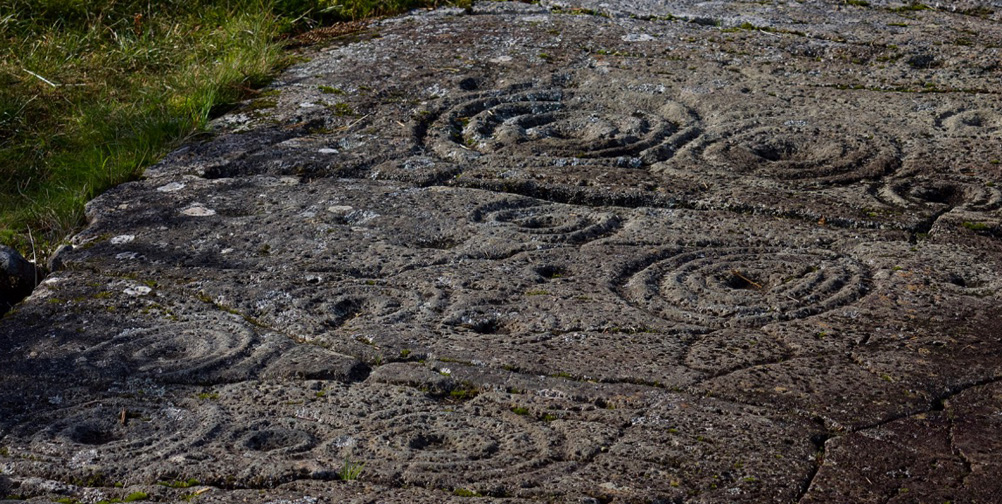
Rock art at Cairnbaan
Towards the end of September last year, on a warm mellow day when it was already beginning to smell of autumn, we wended our way down to the Crinan Canal at Cairnbaan. A short walk through some conifer woods brought us out onto the hillside above, with views across moors and farmland; but for once we were not looking at the distant landscape, but at the ground beneath our feet.
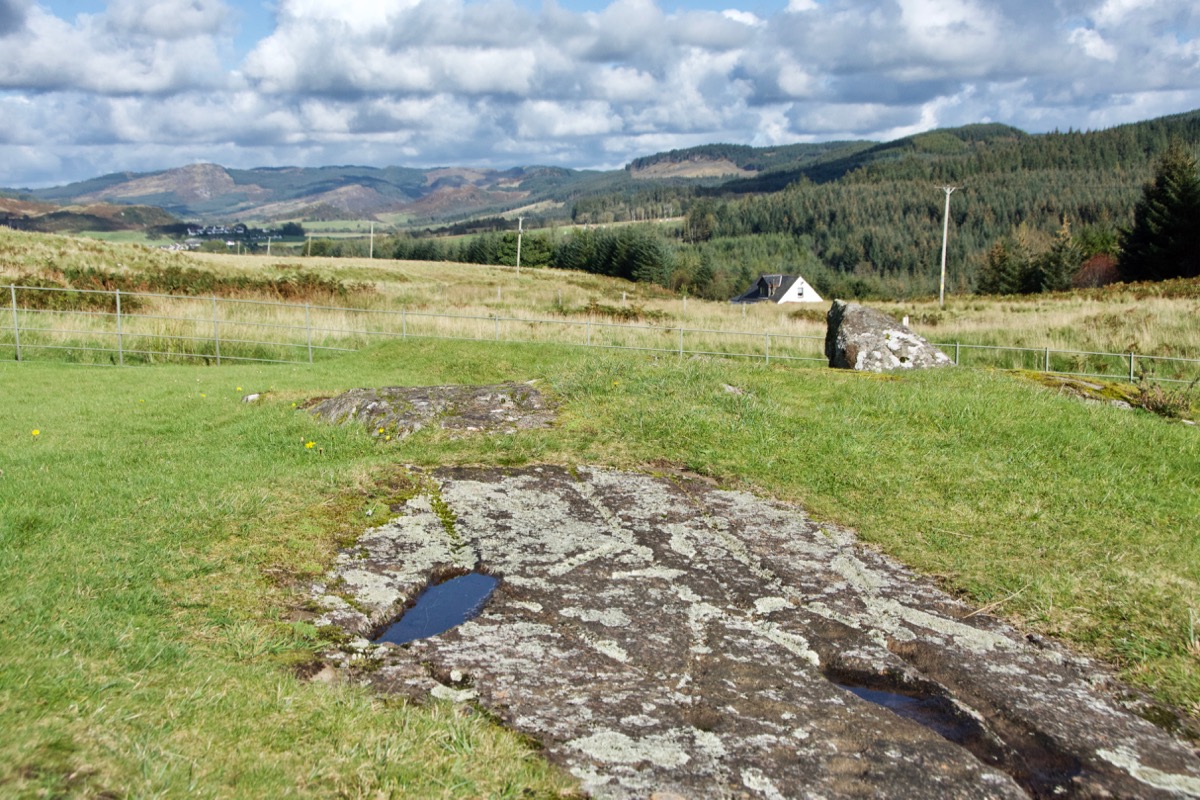 In Kilmartin Glen and the surrounding area, there is a wealth of cup-and-ring marked rocks: we’ve seen them at Achnabreck, at Baluachraig and at Ormaig, overlooking Loch Craignish. They have even been spotted on a couple of standing stones, such as those at Nether Largie. Exactly who carved them and when, and what purpose they served, is still an absolute mystery. Here, on a gently sloping grassy bank, were some more.
In Kilmartin Glen and the surrounding area, there is a wealth of cup-and-ring marked rocks: we’ve seen them at Achnabreck, at Baluachraig and at Ormaig, overlooking Loch Craignish. They have even been spotted on a couple of standing stones, such as those at Nether Largie. Exactly who carved them and when, and what purpose they served, is still an absolute mystery. Here, on a gently sloping grassy bank, were some more.
Because of the profusion of lichen, the patterns were not immediately obvious; crouching low sometimes helps, to see the contrast as the light catches them. They occur in apparently random groups of shallow depressions; some are surrounded by concentric rings, and some have straight-cut lines connecting them with natural fissures in the rock face.
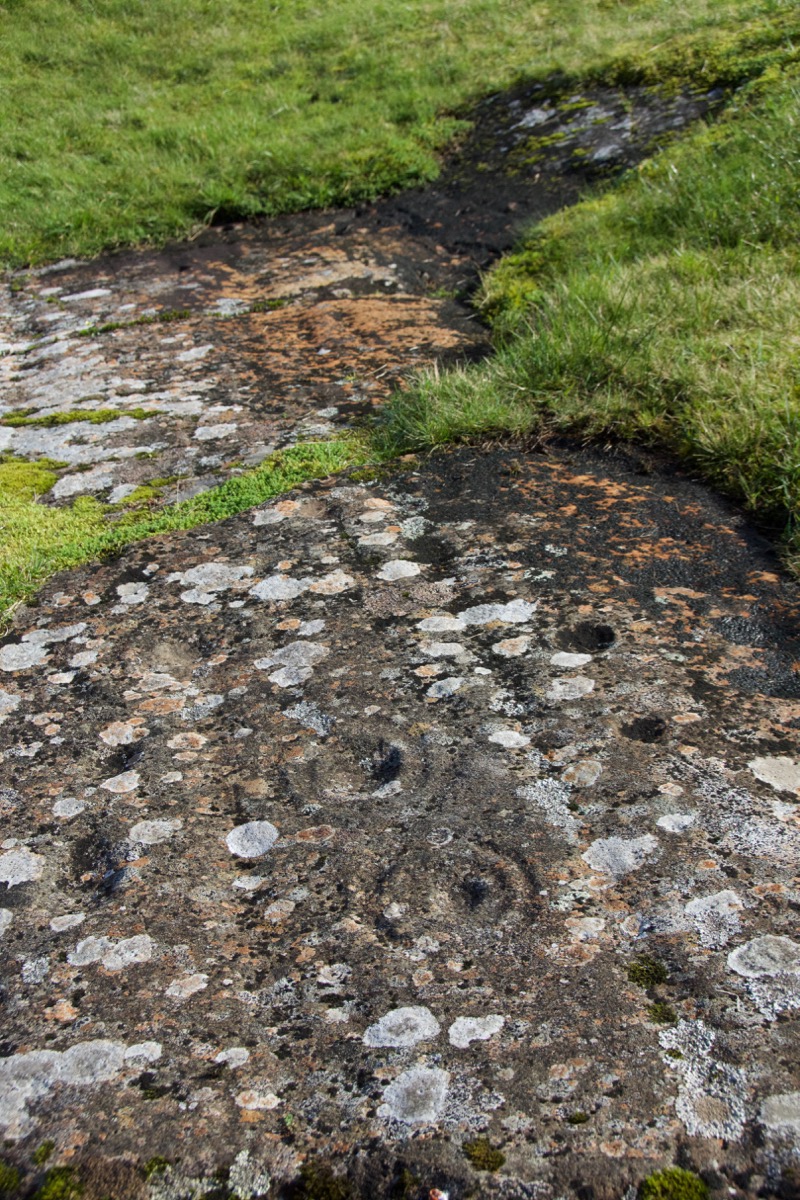
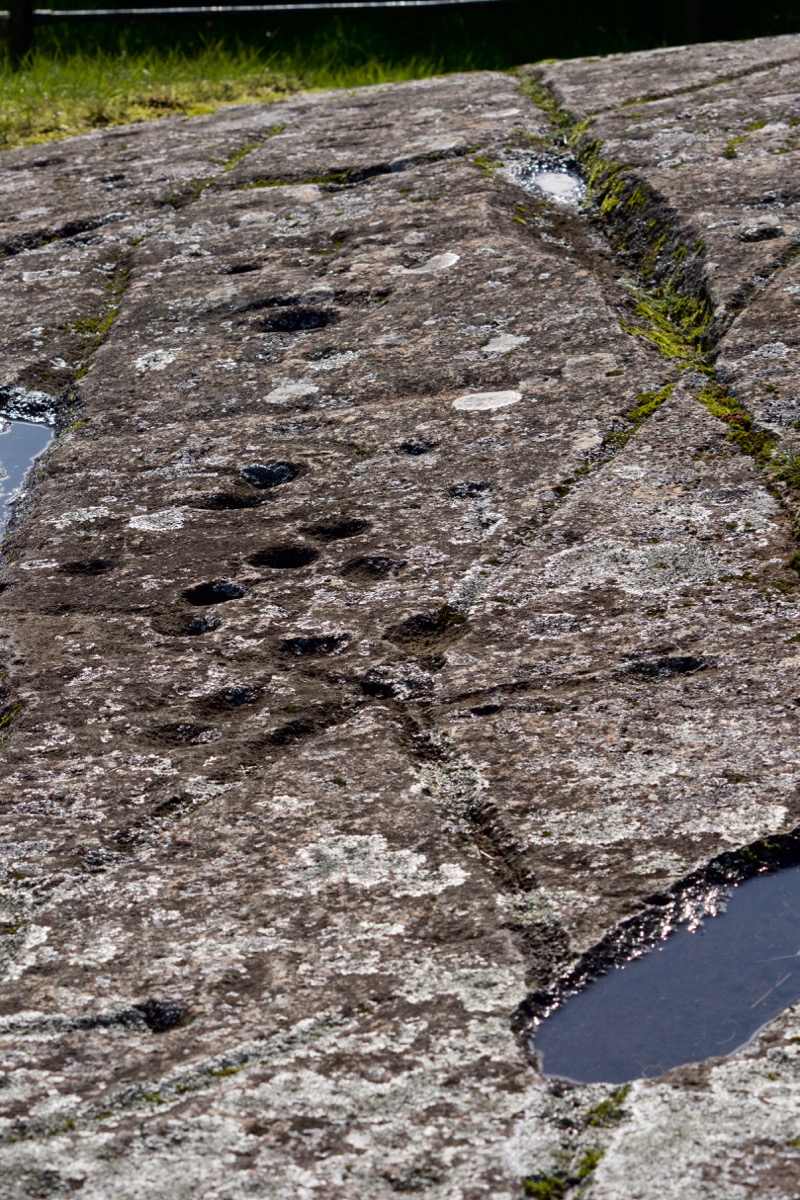
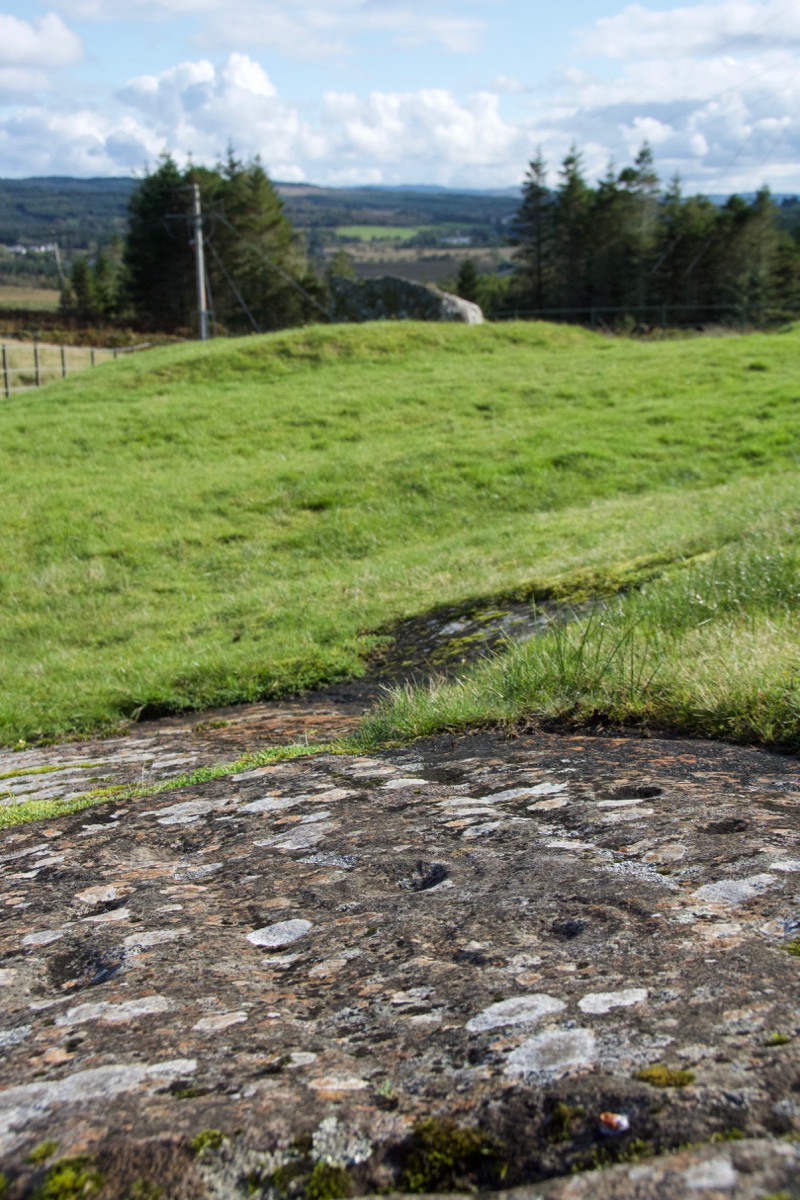 A nearby information sign explained that there were about 66 symbols in all.
A nearby information sign explained that there were about 66 symbols in all.
“The Neolithic people who created the rock art may have chosen these outcrops for their views over an important route into Kilmartin Glen. Particular rocks may have been selected for their patterns of cracks that were possibly seen as divine designs.” (Historic Environment Scotland)
From discoveries made at other sites close by, it is believed that the cup-marks were picked out using quartz hammer-stones. Modern attempts to replicate them suggest that each one took some 30 to 90 minutes to create.
About fifty yards up the slope is a second exposed rock face, bearing larger and more distinguishable markings. The sign here describes it as one of the finest examples of rock art in Scotland. In 1830 it was visited by a schoolmaster named Archibald Currie, who suggested that the concentric rings could represent planetary orbits around the sun. The markings were also inspected by Sir James Young Simpson, physician to Queen Victoria. Having examined several such sites, Simpson observed: “They all evidently indicate, wherever found, a common thought of some common origin, belonging to a common people.”
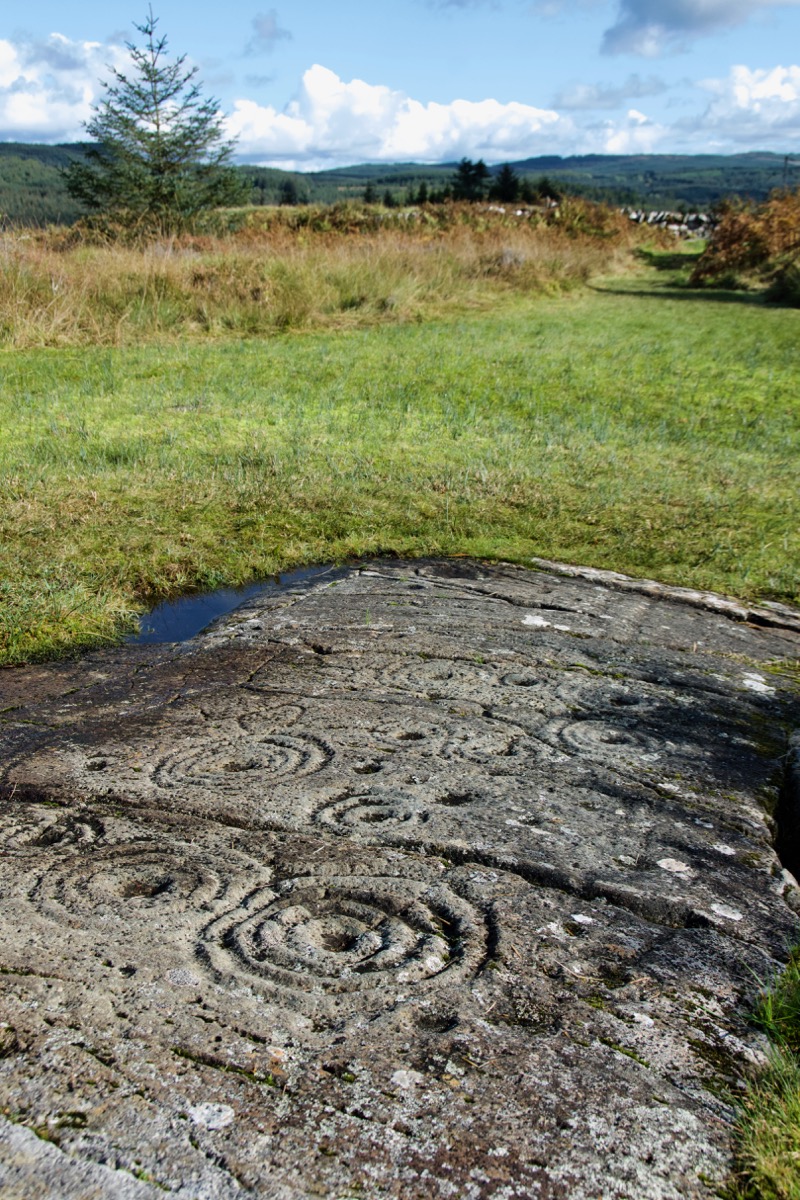
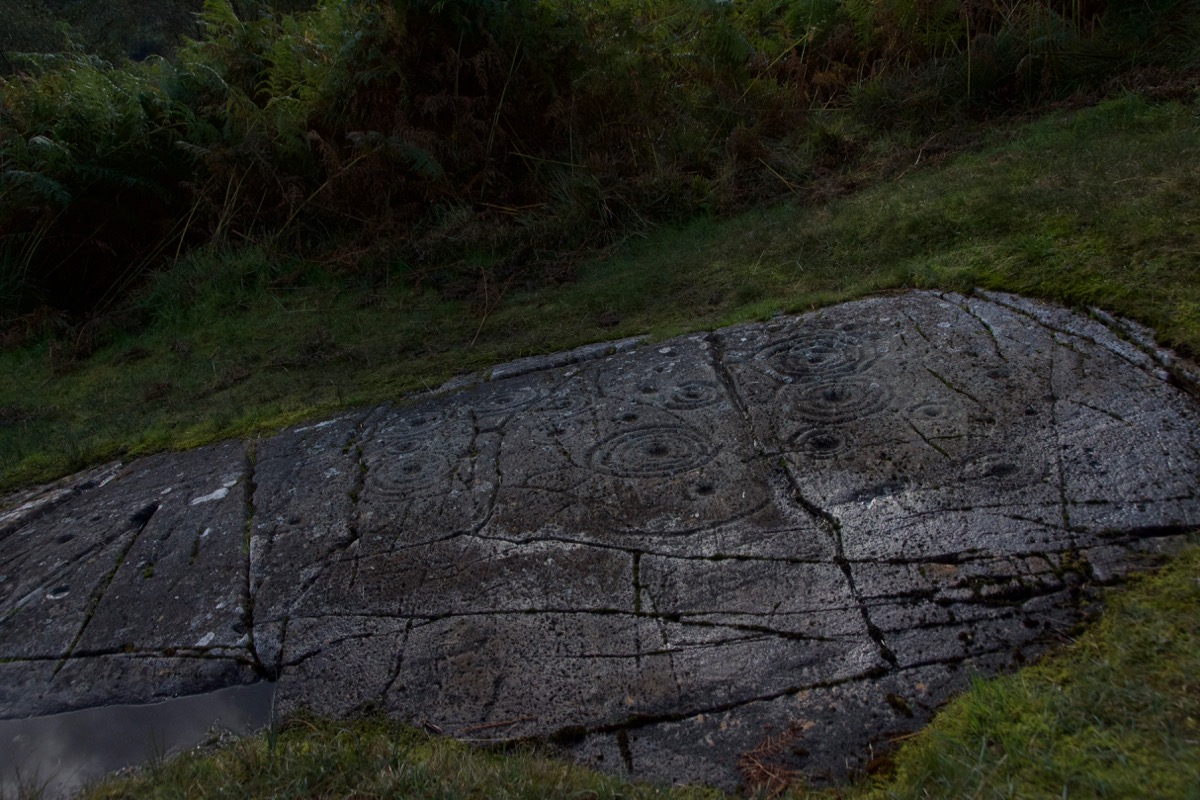
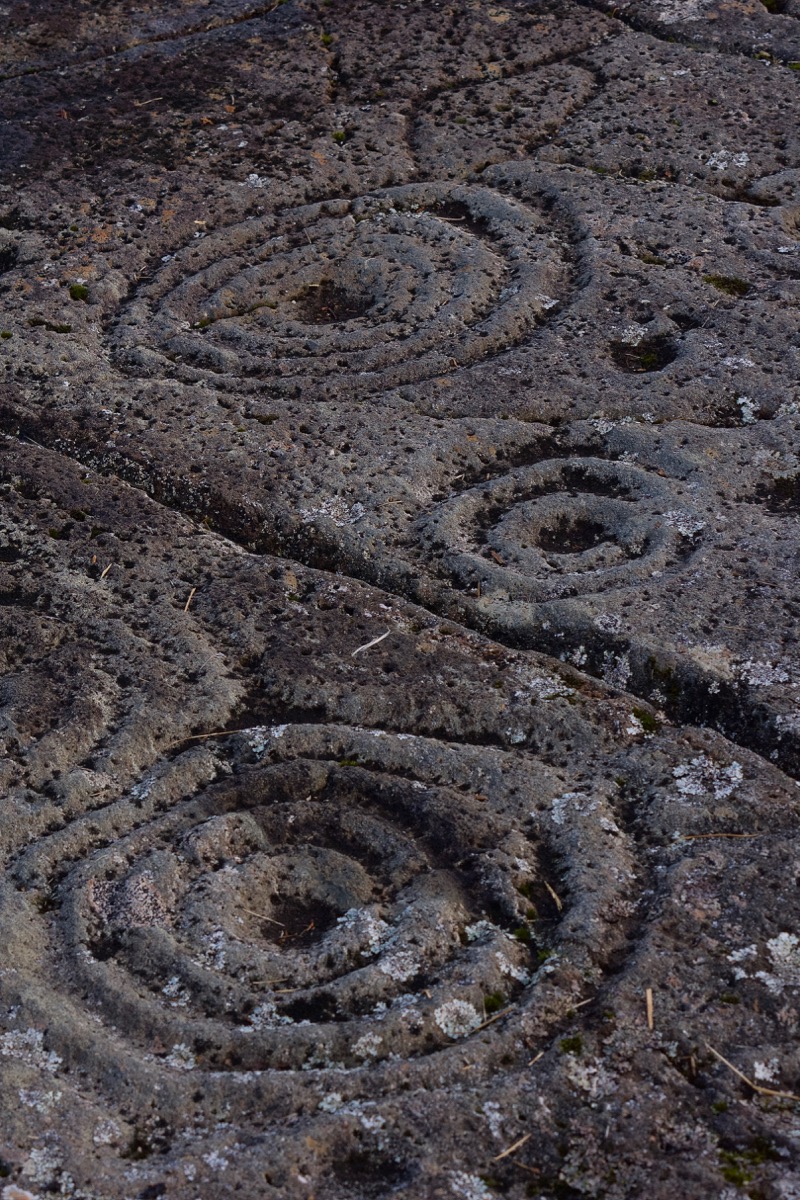 Nearly 200 years later, we are really none the wiser: these enigmatic symbols appeal to our imagination just as much as they always did. The idea of the place sitting at the entrance to Kilmartin Glen suggests to me the possibility of a map, telling visitors or newcomers where to find places of special ritual significance or even of particularly potent energy; I have no more idea than anyone else, but I do think that our ancestors ‘saw’ the earth in a more organic way, and could interpret its energy field with precision. But they could just as easily be places of healing, or social gathering, or education, or astronomical recording.
Nearly 200 years later, we are really none the wiser: these enigmatic symbols appeal to our imagination just as much as they always did. The idea of the place sitting at the entrance to Kilmartin Glen suggests to me the possibility of a map, telling visitors or newcomers where to find places of special ritual significance or even of particularly potent energy; I have no more idea than anyone else, but I do think that our ancestors ‘saw’ the earth in a more organic way, and could interpret its energy field with precision. But they could just as easily be places of healing, or social gathering, or education, or astronomical recording.
The nice thing about cup-and-ring markings is that you can actually trace them with your finger, feeling the grooves and ridges in the same way, presumably, as their creators did some 5,000 years ago. They become a tiny labyrinth, inviting your mind to stop analysing and embrace the present moment. It would be somewhat ironic if history’s biggest lesson to us is that time is irrelevant. Meanwhile, on our walk back down through the woods, the shapes and textures of nature were everywhere: in delicate fungi emerging through the moss, in heather bells and hawkweed, and ripening rose hips.
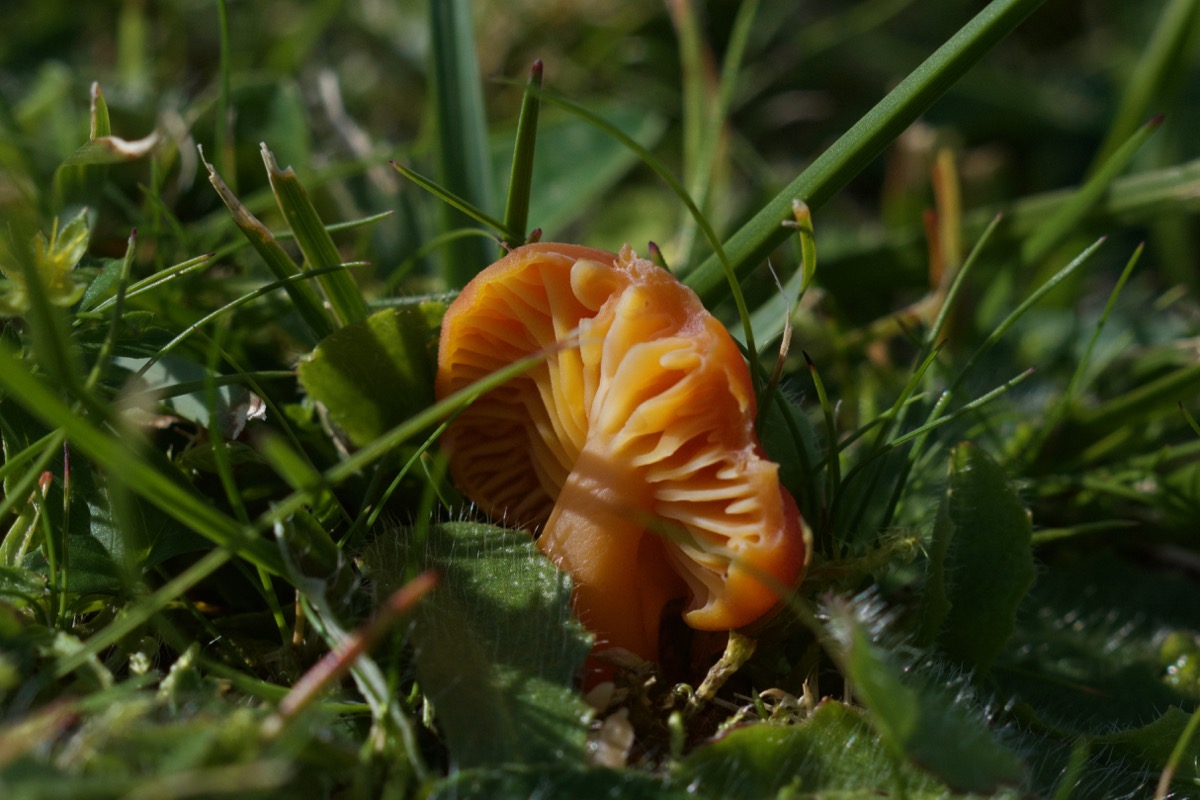
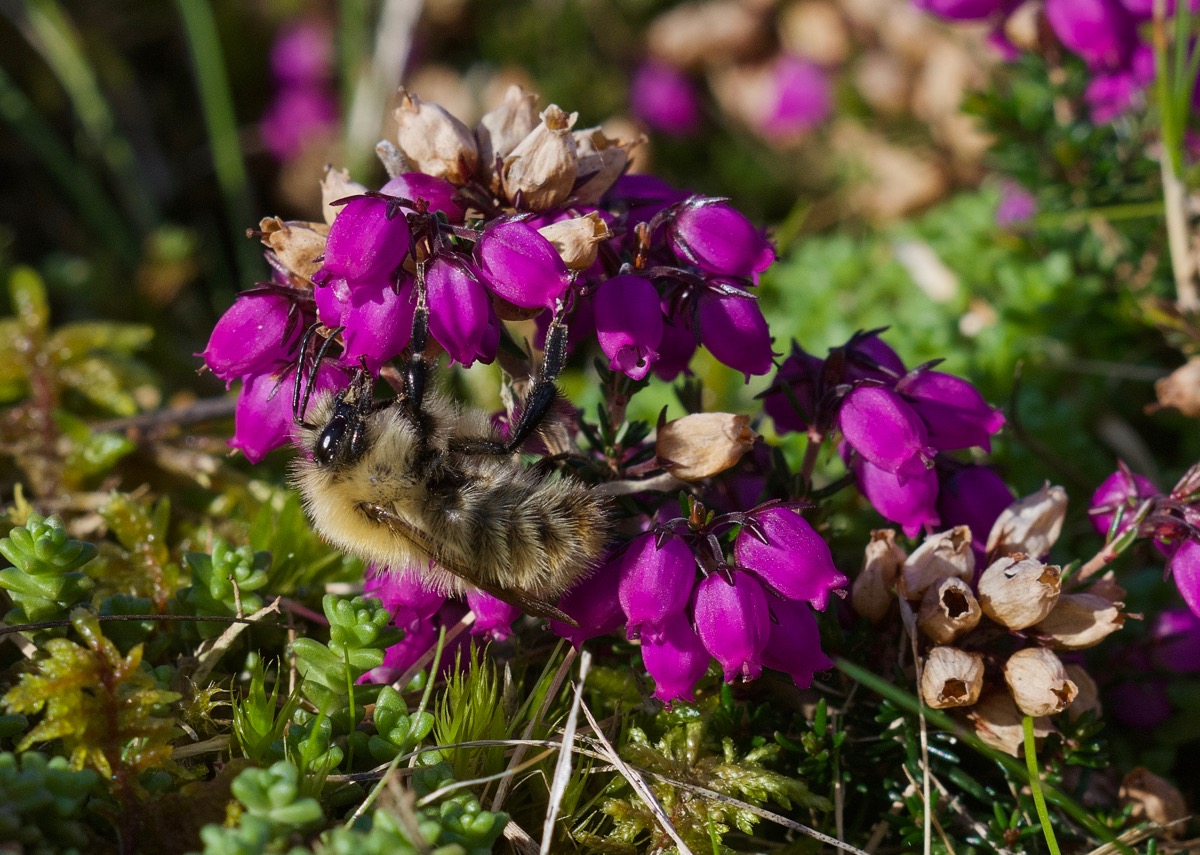

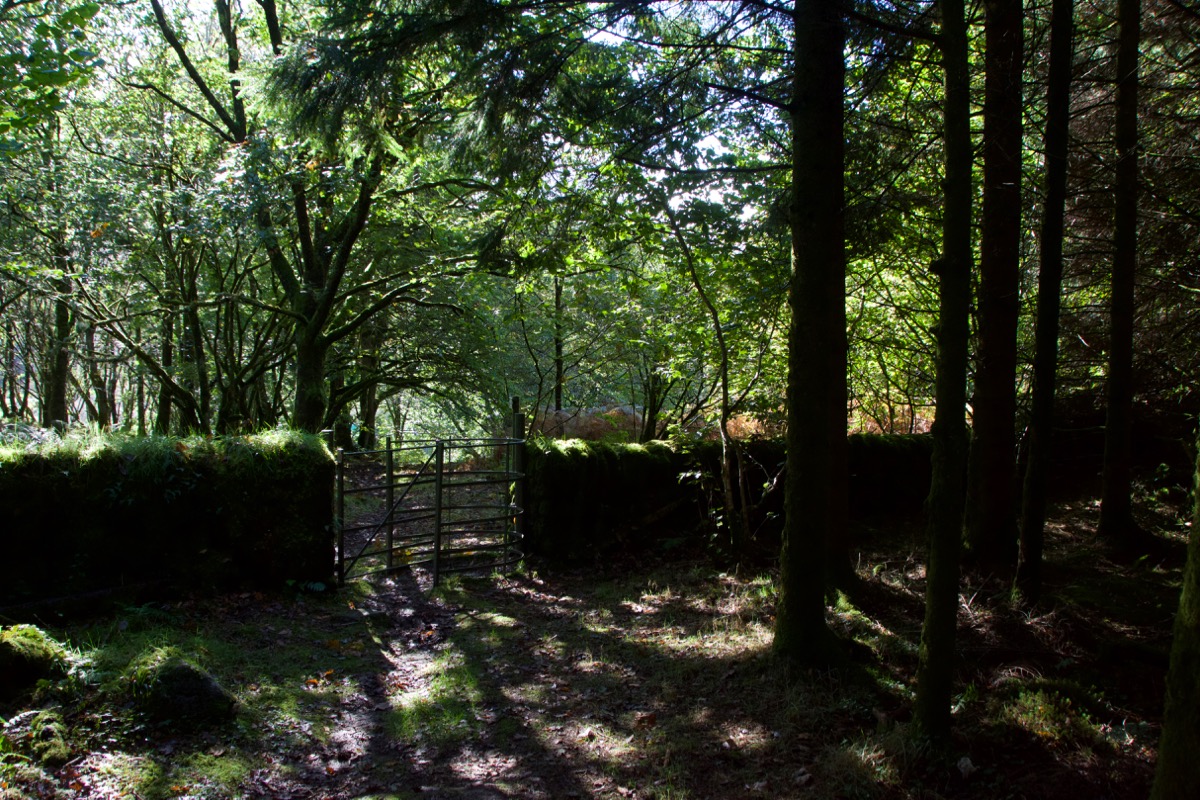 Cup-and-ring marks are not unique to this region, but the fact that they crop up here so frequently speaks volumes about the ancient significance of Kilmartin Glen, with its abundance of burial cairns and megalithic monuments. Many more may still lie undetected beneath layers of soil and vegetation.
Cup-and-ring marks are not unique to this region, but the fact that they crop up here so frequently speaks volumes about the ancient significance of Kilmartin Glen, with its abundance of burial cairns and megalithic monuments. Many more may still lie undetected beneath layers of soil and vegetation.
Further reading & reference:
- Canmore database – first and second sites at Cairnbaan
- Historic Environment Scotland
- Kilmartin Glen
Images © Colin & Jo Woolf


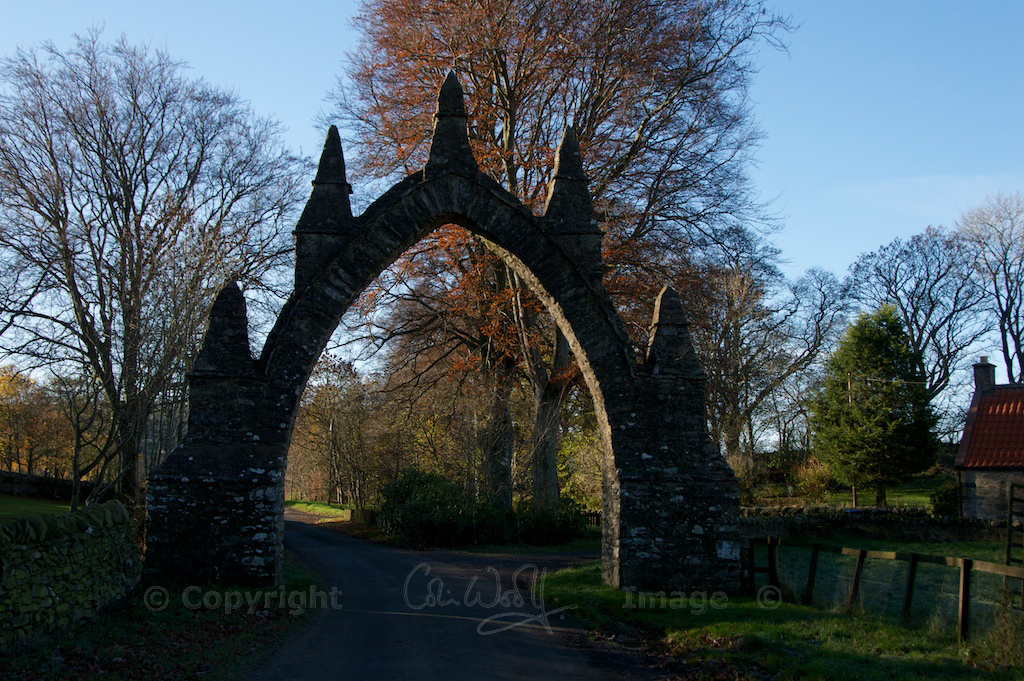
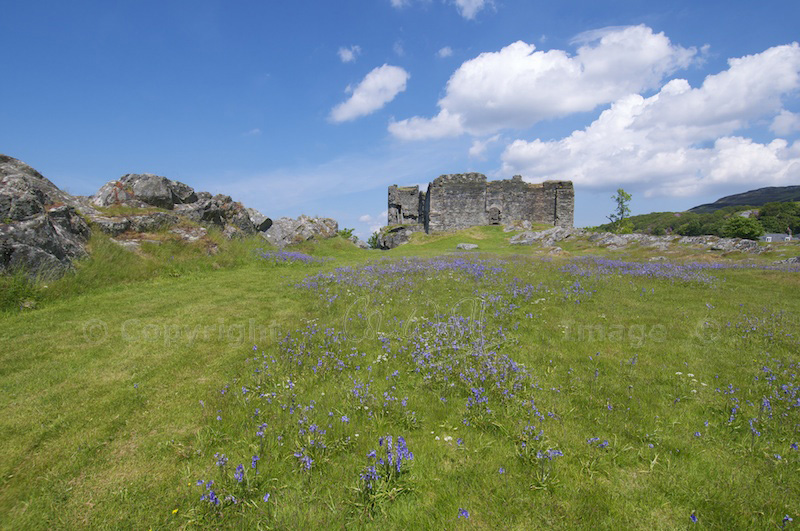
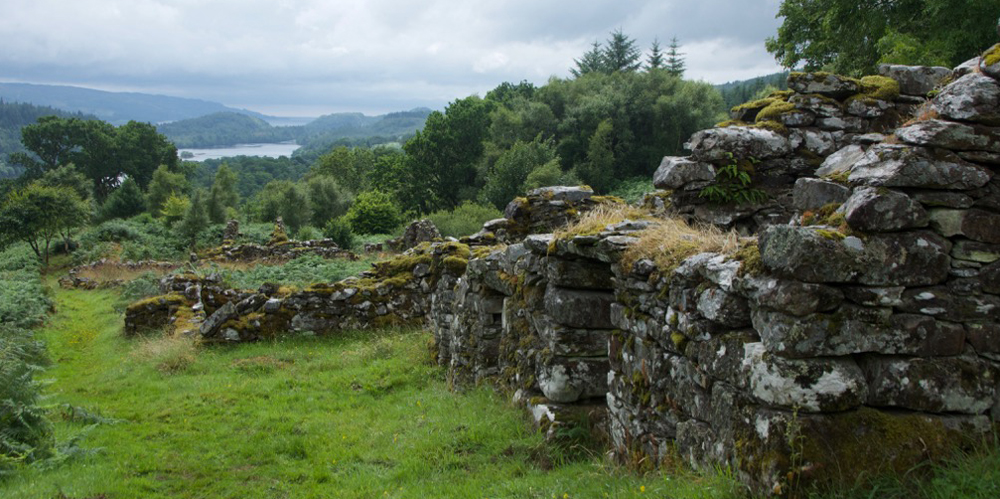
23 Comments
Jean
Thank you Jo for your calming thoughts. The history is fascinating just to imagine individuals thinking of carving into hard solid surfaces in the first place. Terry said maybe it was a marble game to keep children occupied while mothers gathered and fathers hunted, but he would think like that as a pediatrician. I think along fertility lines of course. But in the end, like you so creatively pictured and wrote, let us also dwell on the hidden yet obvious beauty always present . Jean
Jo Woolf
Nice to hear from you, Jean! I love Terry’s idea of the marble game. Someone would have had to look after the children, that’s true! Perhaps they were little play stations! Glad you enjoyed reading about this – there is so much beauty in every season, and we’re so lucky to be surrounded by it. Best wishes to you both.
Pat Webster
I love the idea of running my fingers around the marks, feeling the strength of the rock and thinking of the person who carved the rings and the many others who have traced their pattern over the centuries.
Jo Woolf
Yes – it brings them almost within touching distance!
Ashley
Cup-and-ring marks are fascinating and yes, you have to put your fingers into the grooves and follow them. Reading this just reminded me of a childhood memory! A church choir outing with our parents to Newgrange in County Meath. It would have been in the 1950’s. It wasn’t the “visitor centre” it is nowadays. We children scrambled between 2 huge boulders into a dark mysterious chamber. I don’t remember much about inside the chamber, some of the men, smokers no doubt, lit matches! It was on one of the boulders that I saw what I now call cup-and-ring marks. Fingers in the grooves of course! One of the other memories was that one of the choir, a rather large lady, got stuck between the boulders trying to enter! There was lots of pushing from inside, and I think she somehow removed her coat when she was finally freed from the gripping rocks! Of course, everything ended happily and there was singing on the coach all the way home. “All in the April ev’ning, April airs were abroad; The sheep with their little lambs, Pass’d me by on the road.” Ahh! Lovely.
Jo Woolf
Oh my gosh, what a lovely memory! Thank you, Ashley! The poor woman who got stuck, though..! I can only imagine!
bitaboutbritain
I’d love to see that and like the idea of tracing the lines – a connection with the past, and our ancestors, similar (and almost as moving) as placing your hand over a prehistoric hand-print. The texture of your photographs is amazing. Sorry I haven’t commented for awhile!
Jo Woolf
Nice to hear from you! Well, I haven’t been posting prolifically either – been working on the birds book, which is nearly done! Thank you – yes, there’s something very inviting about these patterns, and I love the way they’re integrated with natural features.
Stravaiging around Scotland
About 30 years ago (!) my grandparents gave me Robert Morris’s book “The Prehistoric Rock Art of Argyll” which covers Cairnbaan (and Achnabreck). I’m slightly ashamed to admit that I still haven’t visited them….
Jo Woolf
Haha, I’ll have to add that one to my collection! It’s always good to have places you want to visit! I’ve still got a very long list!
greg-in-washington
Though some people say anything posted on the internet will last forever, I disagree. The best way to leave a message to the Future is to carve it into a rock somewhere in the countryside. I do like all the ancient stone megaliths etc you report upon. It has been years since I have seen any in real life.
Jo Woolf
That’s an extremely good point – we don’t need any further proof! Glad you enjoy these posts – more megalithic mysteries coming soon!
Jeff Nisbet
A possibility … https://www.academia.edu/43086615/Cup_and_Ring_Marks_Who_made_them_and_why
Jo Woolf
Thank you, Jeff – that’s very interesting. I’ve sometimes pictured children there myself, and wondered… I see you’ve written a paper also on those curious stone balls. Where could I read that?
Jeff Nisbet
Thanks for the kind words, Jo. I suppose I would just say that if the students were children they would have been older children of the “apprentice” age, and these schools, if indeed that’s what they were, more of the “trade school” sort than elementary. I will link you to the version of my 2014 Carved Stone Balls paper that was accepted and published by the Scottish Archaeological Research Framework (ScARF), a joint initiative of Historic Environment Scotland, which funds it, and the Society of Antiquaries of Scotland, which runs it. Hope you find it somewhat persuasive … http://scarf.rcahms.gov.uk/sites/default/files/u12/CarvedStoneBalls.pdf
Jo Woolf
I enjoyed reading the paper on the stone balls – thank you. That’s the most convincing theory I’ve heard so far! I’ve often wondered about them. I love how it was your father’s fire poker that inspired the idea. Would love to find one, haha!
Jeff Nisbet
BTW: Regarding the Hazel, here is a poem by WB Yeats, as interpreted by Donovan … https://youtu.be/UQUT6mS0eY8
Jo Woolf
Lovely, thank you! Such insight. He was an old soul even at a young age.
Bob Hay.
‘… but I do think that our ancestors ‘saw’ the earth in a more organic way, and could interpret its energy field with precision. ‘
Have to agree with you there Jo.
Have you heard of the one at Cochno near Clydebank. Classified as the biggest so far found (and reburied) in Britain.
https://www.factumfoundation.org/pag/252/revealing-the-cochno-stone-2016.
Because of the prevalence of these cup and ring stones throughout Britain and Europe generally, like the stone circles, I’ve often wondered if there was some sort of ‘Wandering scholars or priesthood’ who’d moved all over the country showing the locals how to do them and explaining their purpose.
I don’t know if an academic study has been done on comparing the general similarities or if each one has unique patterns to that area.
It can’t all be convergent thought patterns.
Jo Woolf
I agree, Bob, there may be a key here that we’re missing! I have seen photos of the Cochno stone and I remember when it was unearthed recently, although I didn’t get to see it in person. Amazing site. Another commenter on this post, Jeff Nisbet, has written an interesting paper on cup-and-ring marked rocks and he gave me a link to it: https://www.academia.edu/43086615/Cup_and_Ring_Marks_Who_made_them_and_why
There are indeed lots of questions, but that’s part of the magic I think!
Jeff Nisbet
Thanks for the mention, Jo. The popular Daily Grail alt-news aggregator has just run a feature article about my theory. I suppose I should seize the day and try to direct today’s Neolithic news cycle ??? …
Here’s the link … https://www.dailygrail.com/2020/08/ancient-cup-and-ring-stone-carvings-who-made-them-and-why/
Jo Woolf
Congratulations – that looks great, and well deserved!
Bob Hay
Cup and ring markings in Hawaii? That is intriguing Jeff. Must look into that .
Maybe carved by the Menehune.